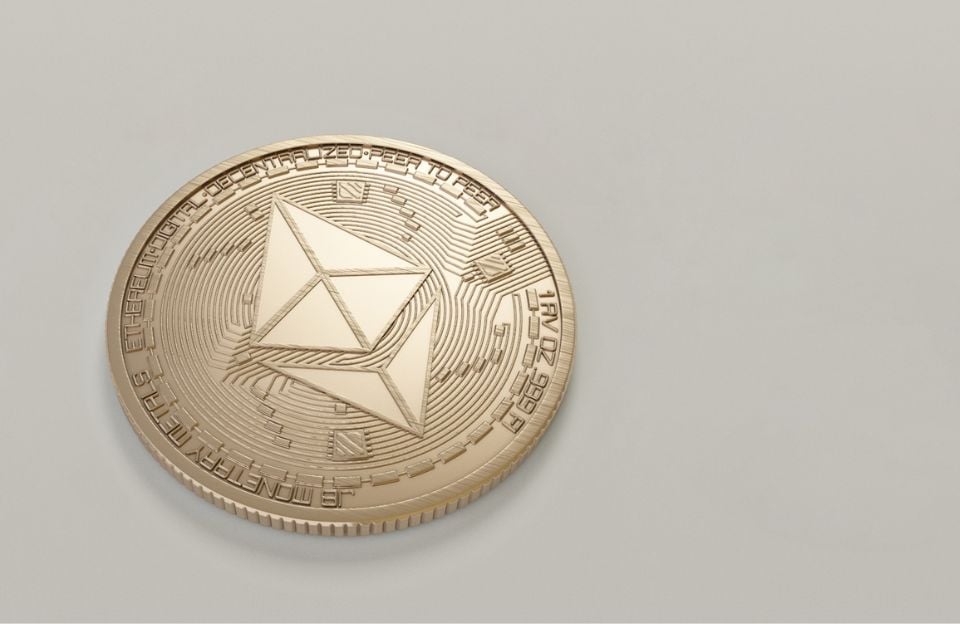What is Ethereum Classic (ETC)?
Swen Keller
- Home
- /
- Cryptocurrencies
- /
- What is Ethereum Classic...
Swen Keller
What is Ethereum Classic (ETC)?
Ethereum Classic is an open-source Proof of Work smart contract blockchain that enables users to build, deploy, and use decentralized apps without permission.
The Ethereum Classic blockchain was originally one with the Ethereum blockchain but philosophical differences within the Ethereum community after the DAO hack gave birth to Ethereum Classic, which is the original and smaller blockchain.
ETC is the native token of the Ethereum Classic blockchain.
Who is the Founder?
Ethereum Classic was conceived by the Ethereum Foundation and Russian-Canadian computer programmer Vitalik Buterin. Vitalik Buterin wrote the white paper on which Ethereum is based. That said, Ethereum Classic’s founding history is a complex one.
Ethereum Classic network emerged on the scene on July 20, 2016, when a couple of developers within the Ethereum community disagreed with how the Ethereum blockchain was progressing.
The bone of contention was the vulnerability in the original code that led to a hack where millions of dollars in ETH were drawn out of the DAO fund, causing investors to panic.
Developers had 28 days to find a solution to the problem before the hackers could cash the funds which at the time was a huge portion of Ethereum’s market cap. The popular solution was to run a hard fork to undo the hack and give investors back their cash.
This option had the support of Vitalik Buterin and some other major players. But other players had an issue with the solution because they believed in the blockchain principle that the ledger must remain untampered, meaning that the 3 blockchains should keep on with the theft.
The individuals who wanted to keep things the same remained on the current platform and changed the name from simply Ethereum to Ethereum Classic (the original Ethereum Chain). On the other hand, the majority of developers, users, and miners headed to the forked network which kept the Ethereum name.
How does Ethereum Classic Work?

Ethereum Classic network uses the Proof of Work consensus mechanism just like Bitcoin to validate transactions. Blockchain security is performed by miners who use their computation power and time to produce blocks and process transactions.
Transactions must be executed in the order they are made and miners ensure this by solving computationally complex puzzles to create blocks, which is a means of securing the network from hackers.
The major difference between Bitcoin and Ethereum Classic even though they use the same consensus mechanism is that the Ethereum Classic network permits users of the platform to run smart contracts.
Smart contracts hold if-then conditions or agreements that are embedded in self-executing lines of code. The process is completely self-contained which eliminates the need for a third party to handle any transactions between a transacting pair.
The Ethereum Classic community intends to stick to Proof of Work mining as it means of securing the blockchain. They will also not include updates implemented by the forked Ethereum blockchain. At the moment, Ethereum Classic utilizes a fixed monetary policy as well
Key Features of Ethereum Classic
Ethereum Classic Safe Multisignature Wallet

The Ethereum Classic Safe Multisignature Wallet also known as ETC Safe is a secure self-custody wallet with smart contracts that are flexible and suitable for individuals and teams who wish to create Multisignature wallets to manage their crypto assets.
The Ethereum Classic Safe Multisignature Wallet supports the native currency Ether (ETC), NFTs, and ERC-20 tokens. The Multisignature Wallet creates smart contracts that function like individual wallets. And these smart contracts require more than one signature to approve and send transactions. The wallet can be connected to the different dApps on Ethereum Classic.
ETC Safe is an implementation of Safe on the Ethereum Classic blockchain. The Safe Wallet can be found at multisig.etccooperative.org. It is an open-source project designed by Ethereum Classic Core Developer Chris Ziogas.
ETC users can change the number of signatures required to send transactions and the authorized addresses whenever the need arises. Every participant of the Safe wallet must have their own personal ETC wallet.
The Ethereum Classic Safe Multisignature Wallet has different sections including the following:
- Transactions: The transaction page displays the transaction history per Safe.
- Dapps: This section contains a list of all the decentralized applications that are registered within the Ethereum Classic Safe. DApp developers who wish to add their dApps to the Ethereum Classic registry can contact the ETC Core team to do so.
- Assets: This section displays the assets held in each Safe and the current valuation of the assets.
- Address Book: The address book section contains a list of the addresses where assets have been sent and received as well as addresses that have been used to create and control Safes.
- Settings: Users can add and remove addresses from each Safe wallet through the settings page. They can also change the number of signatures to send transactions to the wallet.

Weaknesses of Ethereum Classic (ETC)
A major weakness of Ethereum Classic is the security of the protocol. Ethereum Classic has been a victim of a series of hacking attacks.
The first attack happened in July 2016 when the DAO fork created a replay attack that led to the broadcast of a transaction over both the ETH, and ETC networks. In August of the same year, Robin Hood Group, the ETH proponent transferred 2.9 million stolen ETC to Poloniex.
This was done in an attempt to sell Ethereum Classic for ETH on the advice of Bitly SA. 86% of the ETC was frozen by Poloniex and returned to the Robin Hood Group while 14% was successfully converted to ETH and other currencies.
In June 2017, Ethereum Classic announced via its Twitter handle that the website had been compromised. Users were warned of the compromised domain to avoid falling victim to phishing attacks.
From January 2019 through August 2020, Ethereum Classic also suffered multiple 51% attacks. Ethereum Classic blamed these attacks on very low hashrate. The network responded to this series of 51% attacks by implementing countermeasures like ECIP-1099, MESS, and longer confirmation times on exchanges. However, Ethereum Classic upgraded to fix such challenges.
Despite the efforts made by Ethereum Classic to make the network less susceptible to attack, investors have been wary of making major financial transactions and long-term crypto investments on the platform.
Another weakness of Ethereum Classic is the limitations of the protocol’s scalability. Unlike Ethereum, the network can only handle about 15 transactions per second.
This is very low when compared with other payment networks that handle more than one thousand transactions per second. Despite many software upgrades, Ethereum Classic has not been able to upgrade the scalability of its payment systems.
Ethereum Classic is also lagging in the development of Dapps in the ecosystem. The dApp ecosystem is almost nonexistent as there are only 2 active development teams currently working after the ETCDev project was shut down in 2018 due to a lack of funds.
How is Ethereum Classic Created?
New Ethereum Classic coins are minted through the process of mining. The cryptocurrency has a fixed amount of supply and once the remaining coins have been minted, they’ll become unmineable. However, miners will keep earning rewards in the form of transaction fees.
Mining Ethereum Classic
Mining Ethereum Classic (ETC) involves the same process as with other mineable cryptocurrencies. A network of computers run by cryptocurrency miners compete against themselves to verify ETC transactions and create new coins. Miners of the coin earn rewards which are paid in Ethereum Classic.
The rewards are generated by the network in the form of network and transaction fees charged to traders who use the Ethereum Classic blockchain or transact in its native currency. Concerning the average mining time, the number fluctuates constantly but the average mining time for Ethereum Classic is 11.6 seconds.
Which Blockchain does Ethereum Classic Use?
Ethereum Classic cryptocurrency uses the Ethereum Classic (original Ethereum network) blockchain.
How to Use Ethereum Classic (ETC)?
Ether is the native token of the Ethereum Classic ecosystem. It is traded under the ticker symbol ETC. The token was primarily designed as a reward to network nodes for mining. Mining validates computations performed on Ethereum Classic’s EVM. Ethereum Classic users can use the token to pay for tasks within the ecosystem like the installation of new smart contracts.
Ether is used to pay gas fees for performing transactions and computational services on the network.
How to Buy Ethereum Classic (ETC)?

Ether (ETC) can be purchased on popular crypto exchanges like HotBit, Crypto.com, Binance, PancakeSwap, Bybit, Bittrex, Coinbase, and eToro. You can check CoinMarketCap for a list of centralized and decentralized exchanges that support the trading of ETC.
To buy ETC on most exchanges, you will need to create an account with the exchange, verify the account and fund it. You can either buy ETC with the fiat currency you deposited or buy another cryptocurrency and trade the other cryptocurrency for ETC.
How to Store Ethereum Classic (ETC)?
You can store ETC tokens in a web wallet, software wallet, or hardware wallet. Wallets like Metamask, MyEther, Math Wallet, Trezor, Ledger, Exodus, Coinbase, etc can be used to store ETC tokens.
Web wallets and software wallets are not as safe as hardware wallets, so you should store your ETC tokens in a hardware wallet especially if you intend to store large amounts of ETC tokens for an extended period.
Best Place to Stake Ethereum Classic?
Ethereum Classic uses the Proof of Work consensus mechanism so it does not support staking.
What You Need to Know about the Future of Ethereum Classic
The future of Ethereum Classic is quite bleak as most crypto enthusiasts consider the Ethereum blockchain to be the legitimate one of the two. This feeling is much stronger due to the consistent security challenges of the Ethereum Classic. ETC has been hacked several times with the most recent in 2020.
So unless Ethereum Classic fixes its code and software to prevent hacks in the future the road ahead is a dark one.
Conclusion: Should You Put Your Money in Ethereum Classic?
As just mentioned, Ethereum Classic isn’t considered a legitimate Ethereum network by a lot of crypto enthusiasts and investors. It also has faced a ton of security challenges in the past that have discouraged potential investors from engaging with the network. So you should only put money in Ethereum Classic if you believe that the cryptocurrency will overcome all these challenges and come up with a more efficient code.
Risk in Investing in Ethereum Classic
ETC, just like any other crypto, is volatile. This means its price value can rise and drop in extremes in short timeframes. The result of this is that you can lose your entire investment.
FAQ
Most frequent questions and answers
The purpose of the Ethereum Classic token is in maintaining and operating the ETC network. Also, holding ETC allows users to make transactions on the network, use smart contracts, participate in governance votes, and interact with dApps.
Concerning scalability, sustainability, security, and price value, Ethereum outperforms Ethereum Classic.
If you believe in the Proof of Work mechanism and the principle that “code is law”, buying ETC would help further the philosophy of the coin.
No, Ethereum is a hard fork of Ethereum Classic, which is known as the original Ethereum Chain.
Though Ethereum is the primary blockchain used to mine and buy NFTs, a couple of developers use Ethereum Classic.
Skrumble.com provides all its content for informational purposes only, and this should not be taken as financial advice to buy, trade, or sell any investment instruments or products, including but not limited to cryptocurrencies, or use any specific exchange. Please do not use this website as investment advice, financial advice, or legal advice, and each individual’s needs may vary from that of the author. Investing in financial instruments, including cryptocurrencies, carries a high risk and is not suitable for all investors. It is possible to lose the entire initial investment, so do not invest what you cannot afford to lose. We strongly advise conducting your own research before making any investment decisions. This post includes affiliate links with our partners who may compensate us.
To view our privacy policy read here.






